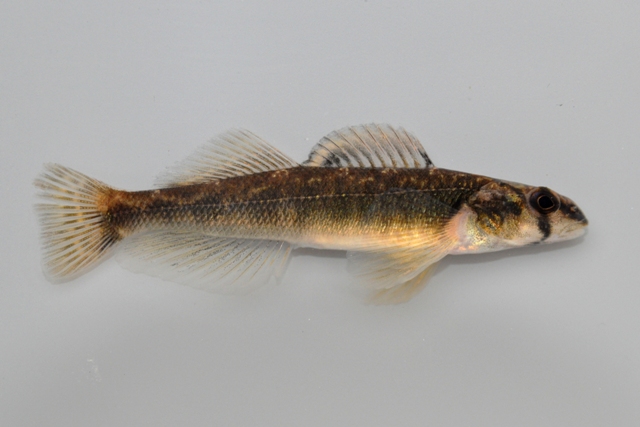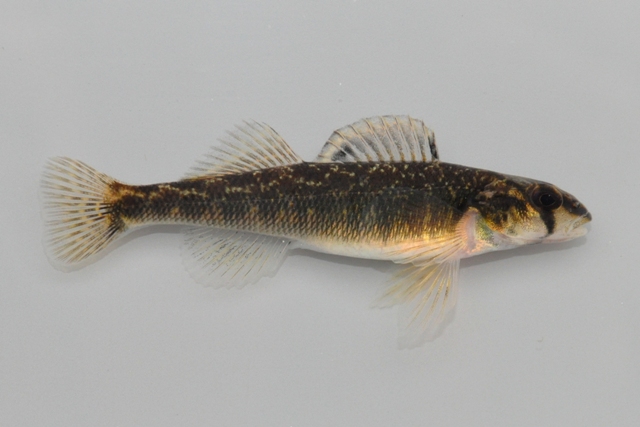River Darter
(Percina shumardi)


The river darter is one of two threatened darter species primarily restricted to the Ohio River and the lower portion of its larger tributaries in Ohio. Males (left) have a much larger elongated anal fin than females (right).
Description
The river darter has 10-15 dark vertical bars along its side which are often fused together near the tail. They also have 6-12 dark blotches or saddles down the center of their back. The first dorsal fin has a dark blotch at the front bottom edge and a larger blotch at the rear bottom edge on the membrane between the last three spines. All other fins are relatively clear with some speckling of small spots. The river darter also has a well developed tear drop under the eye. Males and females are similarly colored but males do have an elongated anal fin. This species of darter is typically a darker brown or yellow brown on their back fading to a light cream color on their belly. This species never displays any bright colors.
Habitat and Habits
The River darter is found in very large rivers typically in areas of swift current. They are found over a gravel or rocky bottom in depths of 3 feet or more. In Ohio this species has historically been found in some of the larger western Lake Erie tributaries. They have also been found in the Ohio River and the lower portion of larger tributaries such as the Scioto, Hocking, and Muskingum Rivers. There are no recent reports of them from the Lake Erie drainage but there are recent records for the Ohio River, possibly even some expansion of their range in that drainage.
Reproduction and Care of the Young
River darters spawn in April or May in Ohio. They lay their eggs in areas of swift current at a depth of 1-3 feet burying them in gravel. They provide no further parental care for the eggs or young.